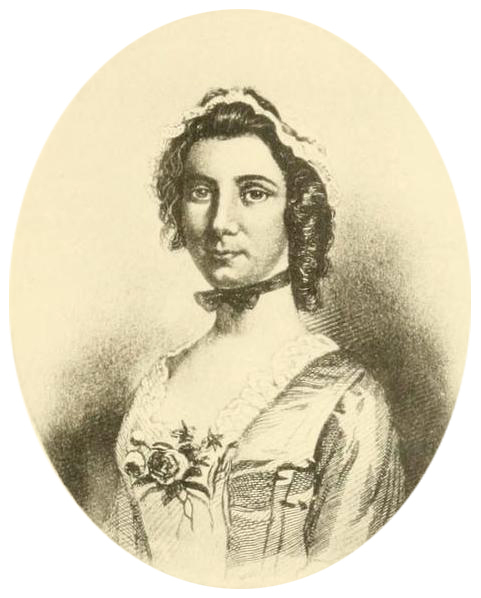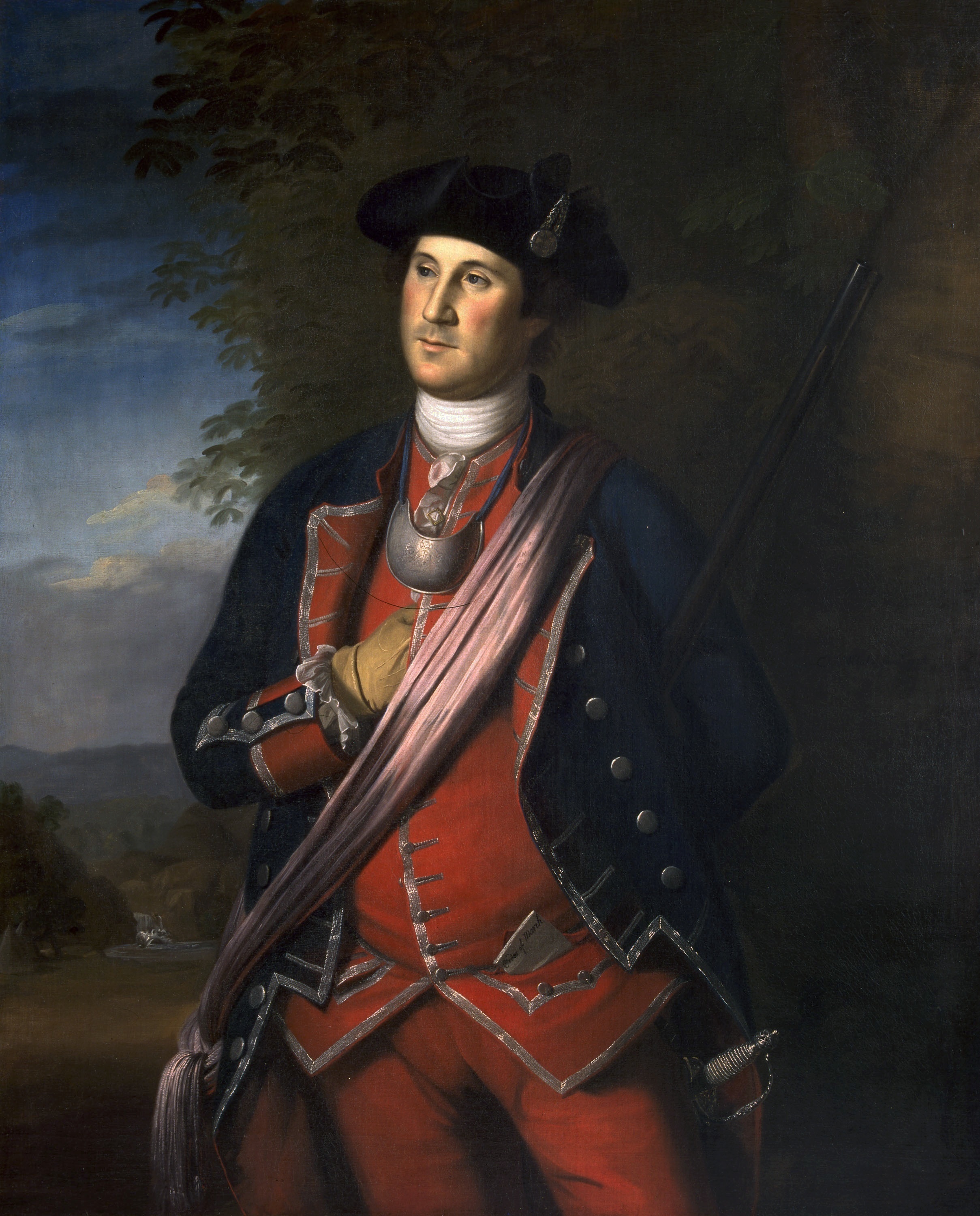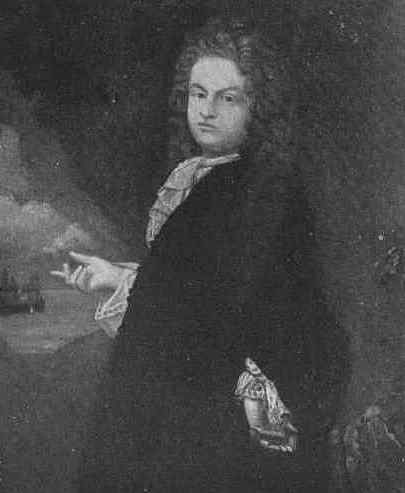|
Mary Philipse
Mary "Polly" Philipse (1730–1825) was the middle daughter of Frederick Philipse II, 2nd Lord of Philipsburg Manor of Westchester County, New York. Of Anglo-Dutch extraction, she was a wealthy heiress (although strictly not so, as she had brothers who inherited from their father), possible early love interest of George Washington, and New York City socialite. Married to an ex-British army colonel, her Loyalist sympathies in the American Revolution reshaped her life. At the age of 22 she inherited one-third of her father's roughly "Highland Patent", which sprawled from the Hudson Highlands on the west bank of the lower Hudson River to the Connecticut Colony in the east. In 1758 she married in New York Englishman Roger Morris (January 1727 – September 1794), who had fought extensively in the French and Indian War. With Roger's appointment to the Governor's Council of the Province of New York the couple became pillars of the local establishment. A year after their marriage ... [...More Info...] [...Related Items...] OR: [Wikipedia] [Google] [Baidu] |
Mary Philipse Morris
Mary "Polly" Philipse (1730–1825) was the middle daughter of Frederick Philipse II, 2nd Lord of Philipsburg Manor of Westchester County, New York. Of Anglo-Dutch extraction, she was a wealthy heiress (although strictly not so, as she had brothers who inherited from their father), possible early love interest of George Washington, and New York City socialite. Married to an ex-British army colonel, her Loyalist sympathies in the American Revolution reshaped her life. At the age of 22 she inherited one-third of her father's roughly "Highland Patent", which sprawled from the Hudson Highlands on the west bank of the lower Hudson River to the Connecticut Colony in the east. In 1758 she married in New York Englishman Roger Morris (January 1727 – September 1794), who had fought extensively in the French and Indian War. With Roger's appointment to the Governor's Council of the Province of New York the couple became pillars of the local establishment. A year after their marriage ... [...More Info...] [...Related Items...] OR: [Wikipedia] [Google] [Baidu] |
Bill Of Attainder
A bill of attainder (also known as an act of attainder or writ of attainder or bill of penalties) is an act of a legislature declaring a person, or a group of people, guilty of some crime, and punishing them, often without a trial. As with attainder resulting from the normal judicial process, the effect of such a bill is to nullify the targeted person's civil rights, most notably the right to own property (and thus pass it on to heirs), the right to a title of nobility, and, in at least the original usage, the right to life itself. In the history of England, the word "attainder" refers to people who were declared "attainted", meaning that their civil rights were nullified: they could no longer own property or pass property to their family by will or testament. Attainted people would normally be punished by judicial execution, with the property left behind escheated to the Crown or lord rather than being inherited by family. The first use of a bill of attainder was in 1321 agains ... [...More Info...] [...Related Items...] OR: [Wikipedia] [Google] [Baidu] |
Beverley Robinson
Beverley Robinson (11 January 1721 – 9 April 1792), was a Virginia-born soldier who became a wealthy colonist of the Province of New York and is best known as a Loyalist during the American Revolutionary War. Robinson married Susanna Philipse, heiress to a significant share of the roughly Highland Patent on the lower Hudson River in the Province of New York. In 1777 Robinson formed the Loyal American Regiment, which became very active in that conflict. He also worked with the British secret service, particularly in switching the allegiances of Continental general Benedict Arnold in the André Affair. At the time of his betrayal, Gen. Arnold was using the confiscated Robinson home as his headquarters, as was Continental Army commander-in-chief George Washington. Captured spy André was brought to the house and following André's trial and sentencing British commanding general Sir Henry Clinton sent a delegation to Gen. Washington that included Robinson as a character wit ... [...More Info...] [...Related Items...] OR: [Wikipedia] [Google] [Baidu] |
Virginia Regiment
The Virginia Regiment was formed in 1754 by Virginia's Royal Governor Robert Dinwiddie, as a provincial corps. The regiment served in the French and Indian War, with members participating in actions at Jumonville Glen and Fort Necessity in 1754, the Braddock expedition in 1755, and the Forbes expedition in 1758. Small detachments of the regiment were involved in numerous minor actions along Virginia's extensive wilderness frontier. History The conflict over the Ohio country led to raising of the first provincial regiment in Virginia. In 1754, the General Assembly of Virginia voted to raise a regiment of 300 men and send it to the confluence of the Alleghany and Monongahela rivers. After the battle of Fort Necessity, the Assembly voted to increase the size of the regiment from five companies to ten. The Virginian provincial troops who participated in the Braddock Expedition of 1755 and suffered defeat at the Battle of the Monongahela were unregimented: at the behest of General ... [...More Info...] [...Related Items...] OR: [Wikipedia] [Google] [Baidu] |
New London, Connecticut
New London is a seaport city and a port of entry on the northeast coast of the United States, located at the mouth of the Thames River in New London County, Connecticut. It was one of the world's three busiest whaling ports for several decades beginning in the early 19th century, along with Nantucket and New Bedford, Massachusetts. The wealth that whaling brought into the city furnished the capital to fund much of the city's present architecture. The city subsequently became home to other shipping and manufacturing industries, but it has gradually lost most of its industrial heart. New London is home to the United States Coast Guard Academy, Connecticut College, Mitchell College, and The Williams School. The Coast Guard Station New London and New London Harbor is home port to the Coast Guard Cutter ''Coho'' and the Coast Guard's tall ship ''Eagle''. The city had a population of 27,367 at the 2020 census. The Norwich–New London metropolitan area includes 21 towns and 274,055 ... [...More Info...] [...Related Items...] OR: [Wikipedia] [Google] [Baidu] |
Philipse Manor Hall
Philipse Manor Hall State Historic Site is a historic house museum located in the Getty Square neighborhood of Yonkers, New York. Originally the family seat of Philipse Manor, it is Westchester County's second oldest standing building after the Timothy Knapp House. Located near the Hudson River at Warburton Avenue and Dock Street, it is owned and operated by the New York State Office of Parks, Recreation and Historic Preservation. History The southwest corner, the oldest part of the structure, was built around 1682 by Dutch-born merchant and trader Frederick Philipse, the first Lord of Philipsburg Manor, and his wife Margaret Hardenbroeck. Philipse, who by his second marriage became a son-in-law of Stephanus Van Cortlandt, had amassed by the time of his death a estate along the Hudson River that encompassed the entire modern city of Yonkers and much of western and lower Westchester County. During Philipse's life, the building was used primarily as a stopover point on the lon ... [...More Info...] [...Related Items...] OR: [Wikipedia] [Google] [Baidu] |
Putnam County, New York
Putnam County is a county located in the U.S. state of New York. As of the 2020 census, the population was 97,668. The county seat is Carmel. Putnam County formed in 1812 from Dutchess County and is named for Israel Putnam, a hero in the French and Indian War and a general in the American Revolutionary War. Putnam County is included in the New York-Newark- Jersey City, NY- NJ- PA Metropolitan Statistical Area. It is located in the lower Hudson River Valley. Midtown Manhattan is around a one-hour drive, and Grand Central Terminal is approximately one hour and twenty minutes by train from the county. It is one of the most affluent counties in America, ranked 21st by median household income, and 43rd by per-capita income, according to the 2012 American Community Survey and 2009-2013 American Community Survey, respectively. History In 1609, the Wappinger Native American people inhabited the east bank of the Hudson River. They farmed, hunted, and fished throughout their r ... [...More Info...] [...Related Items...] OR: [Wikipedia] [Google] [Baidu] |
Philipse Patent
The Philipse Patent was a British royal patent for a large tract of land on the east bank of the Hudson River about 50 miles north of New York City. It was purchased in 1697 by Adolphus Philipse, a wealthy landowner of Dutch descent in the Province of New York, and in time became today's Putnam County. Philipse bought the roughly tract from two Dutch traders who had purchased it from "Wiccopee chiefs" of the Wappinger native American people. Originally known as the Highland Patent, it spanned from the Hudson to the then Connecticut Colony along today's northern Westchester County border. In 1731 it was incorporated into Dutchess County, and divided in 1754 among three heirs, but remained in the Loyalists Philipse family until seized in 1779 during the Revolution. The Commissioners of Forfeiture of the Revolutionary Province of New York auctioned it in parcels, without compensation to its prior owners. In spite of a provision requiring restitution in the 1783 Treaty of Paris, ... [...More Info...] [...Related Items...] OR: [Wikipedia] [Google] [Baidu] |
Margaret Philipse (1733-1752)
Margaret Hardenbroeck de Vries Philipse ( – ) was a prominent and wealthy merchant in the colonial Province of New York. She inherited great wealth from her first husband after his early death, and later married another merchant and landowner, Frederick Philipse, who became 1st Lord of Philipse Manor. Early life Margareta Hardenbroeck was born in the Rhine Valley of the Netherlands. She was the daughter of Adolph Hardenbruk (the surname later varied), a German emigrant who lived in New Jersey across from the Dutch colony of New Amsterdam,Savery, Florence M., Cold Springs Recorder, 1912 along with her older brother Abel Hardenbroeck, who came as an indentured servant to the Ten Eyck family. Career She established herself in the burgeoning city in the late 1650s working in as a debt-collecting agent for her cousin, Wolter Valck. She also worked as a business agent for several Dutch merchants, trading small items such as pins, cooking oils, and vinegar in exchange for furs. Br ... [...More Info...] [...Related Items...] OR: [Wikipedia] [Google] [Baidu] |
Susanna Philipse
Susanna Philipse (also "Susannah"; 8 September 1727 – 22 November 1822) was the eldest surviving daughter of Frederick Philipse II, 2nd Lord of Philipsburg Manor of Westchester County, New York. She was, along with her elder brother Philip Philipse (1724–1768), Philip (1724–1768) and younger sisters Mary Philipse, Mary (1730–1825), and Margaret Philipse (1733-1752), Margaret (1733-1752), a one-quarter heir to the roughly "Highland Patent" of her father (later to become known as the Philipse Patent, and in time today's Putnam County, New York, Putnam County of southeastern New York). Susanna was married to Beverley Robinson, a soldier from a prominent family in the Virginia Colony, Colony of Virginia who had relocated to the Province of New York. He was a childhood friend of future American general and statesman George Washington, who was for a time during the French and Indian War an irregular guest at their home on Susanna's land on the east bank of the Hudson. It is ... [...More Info...] [...Related Items...] OR: [Wikipedia] [Google] [Baidu] |
Philip Philipse (1724–1768)
Philip Philipse (1724–1768) was the second son of Frederick Philipse II, 2nd Lord of Philipsburg Manor of Westchester County, New York. He was, along with his sisters Susanna (1727–1822), Mary (1730–1825), and Margaret (1733-1752), a one-quarter heir to the roughly "Highland Patent" of his father (later to become known as the Philipse Patent, and in time today's Putnam County of southeastern New York). Margaret died intestate, and her share was equally divided among her named living siblings. A redistribution of the land among them was done in 1754.French's Gazetteer of the State of New York (1860): “The Philipses Patent… divided among the remaining three hildren Philip… Susannah married to Beverly Robinson, and Mary married to Col. Roger Morris. On the 7th of Feb 1754, the patent was divided into 9 lots: 3, each 4 mi. square, bordering upon the Hudson and denominated ‘water lots;’ 3, each 4 mi. wide by 12 long, extending N. and S. across the patent, and denom ... [...More Info...] [...Related Items...] OR: [Wikipedia] [Google] [Baidu] |
Map Of Philipse Patent (showing The Oblong And Gore)
A map is a symbolic depiction emphasizing relationships between elements of some space, such as objects, regions, or themes. Many maps are static, fixed to paper or some other durable medium, while others are dynamic or interactive. Although most commonly used to depict geography, maps may represent any space, real or fictional, without regard to context or scale, such as in brain mapping, DNA mapping, or computer network topology mapping. The space being mapped may be two dimensional, such as the surface of the earth, three dimensional, such as the interior of the earth, or even more abstract spaces of any dimension, such as arise in modeling phenomena having many independent variables. Although the earliest maps known are of the heavens, geographic maps of territory have a very long tradition and exist from ancient times. The word "map" comes from the , wherein ''mappa'' meant 'napkin' or 'cloth' and ''mundi'' 'the world'. Thus, "map" became a shortened term referring to ... [...More Info...] [...Related Items...] OR: [Wikipedia] [Google] [Baidu] |

.png)




